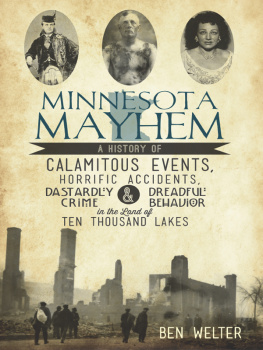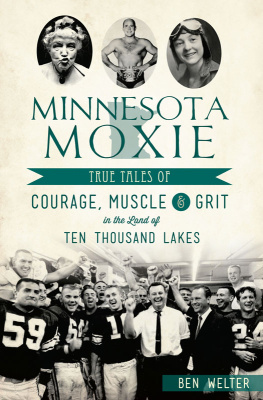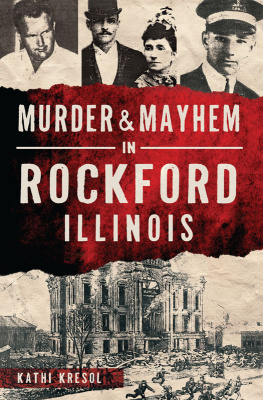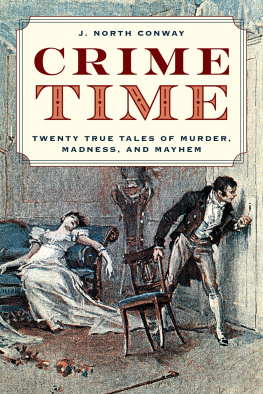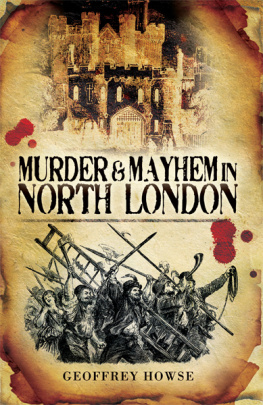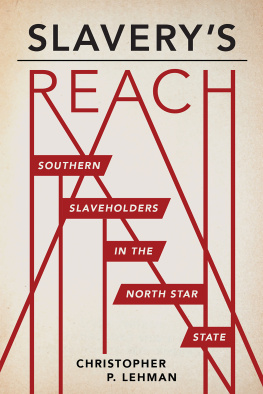
Published by The History Press
Charleston, SC 29403
www.historypress.net
Copyright 2012 by Ben Welter
All rights reserved
Some material in this book includes or is based on articles and photos first published in the Star Tribune newspaper (or its predecessors, the Minneapolis Star and Tribune, Minneapolis Star, Minneapolis Tribune, Minneapolis Star-Journal, Minneapolis Journal and Minneapolis Times) or on StarTribune.com. Those articles and photos are copyright by the Star Tribune Media Company LLC and are reprinted here with permission. The Star Tribune Media Company LLC retains certain copyright and syndication rights for those articles and photos.
First published 2012
e-book edition 2012
ISBN 978.1.61423.504.0
print edition ISBN 978.1.60949.597.8
Library of Congress CIP data applied for.
Notice: The information in this book is true and complete to the best of our knowledge. It is offered without guarantee on the part of the author or The History Press. The author and The History Press disclaim all liability in connection with the use of this book.
All rights reserved. No part of this book may be reproduced or transmitted in any form whatsoever without prior written permission from the publisher except in the case of brief quotations embodied in critical articles and reviews.
Some material in this book includes or is based on articles and photos first published in the Star Tribune newspaper (or its predecessors, the Minneapolis Star and Tribune, Minneapolis Star, Minneapolis Tribune, Minneapolis Star-Journal, Minneapolis Journal and Minneapolis Times) or on StarTribune.com. Those articles and photos are copyright by the Star Tribune Media Company LLC and are reprinted here with permission. The Star Tribune Media Company LLC retains certain copyright and syndication rights for those articles and photos.
CONTENTS
INTRODUCTION
The first edition of the Minneapolis Tribune hit the streets in May 1867. Virtually every page of every issue of the Tribune and its descendants is preserved on microfilm stored in steel cabinets at the Star Tribune in downtown Minneapolis. During dinner breaks, I head to the newsroom library, fish out one of the hundreds of rolls, thread it into a digital reader and take a look back in time. How much did it cost to block and clean a bowler hat in 1898? How did the Tribune cover the sinking of the Titanic? What movies were showing in Hennepin Avenue theaters in the 1950s? Did St. Pauls super mayor of the early 70s, Charlie McCarty, really use an electronic device to turn traffic lights in his favor?
The most interesting pieces find new life in my blog, Yesterdays News (www.startribune.com/yesterday). Since 2005, Ive posted five hundred stories and more than one thousand photos. Fresh interviews and reader recollections flesh out many of the posts.
Minnesota Mayhem, based on my blog, is a collection of some of the states worst momentslarge and small, tragic and amusing, heartbreaking and revelatoryover the past 140 years. These newspaper accounts are preserved in their original form, along with photos from the archives of the Minnesota Historical Society, Hennepin County Librarys Minneapolis Collection, the Carlton County Historical Society and the Star Tribune.
I hope you enjoy these voices from Minnesotas past.
A CON MAN WITHOUT PEER
AUGUST 1871AUGUST 1874, MINNEAPOLIS TRIBUNE
Posing as a wealthy Scottish landowner, a well-groomed gentleman identifying himself as Lord Gordon-Gordon arrived in Minnesota in August 1871. Using money stolen in an earlier swindle in Edinburgh, he deposited $40,000 in cash at the National Exchange Bank in Minneapolis and checked into the Nicollet Hotel. In conversations around town, he mentioned in offhanded fashion that he was an heir of the earls of Gordon and had an annual income of more than $1 million. He also let it be known that he was interested in buying fifty thousand acres of Minnesota land on which to resettle tenants of his overpopulated estates.
Word of the wealthy foreigner quickly spread in the city of twenty thousand, and within days, Gordon-Gordon met with Colonel John Loomis, a Northern Pacific Railway official who invited him to join rail executives and surveyors on a tour of the state. The men traveled in high style. According to the Fergus Falls Daily Journal, the caravan featured forty horses, twelve men to pitch tents, a French cook and a number of colored waiters wearing white linen aprons and white silk gloves. Gordon-Gordon insisted that everyone address him as My Lord. The railroad provided him with a private carriage, a secretary and a valetand covered all his expenses during the lavish, three-month tour, at a cost estimated at $15,000.
He is the richest landlord in Europe, a beaming Loomis told Northern Pacific directors. He will invest $500,000,000 with us.
William A. Croffut, who was editor of the Minneapolis Tribune in the early 1870s, later described the tour in Putnams Magazine:
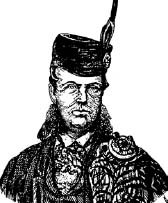
The details of Lord Gordon-Gordons early life and his real identity remain unclear. Two things are certain: he was neither a Scotsman nor an heir to the earls of Gordon.
His Lordship saw the State thoroughly, and inspected and selected vast areas of arable land that would rejoice the soul of a Highlander. He also incidentally located and named several cities, explaining that it would be necessary to have churches and schools well organized before his colonists would flock thither in large numbers. Then he said he was satisfied and the excursion could now halt while he went to New York for money to pay for his purchase. While up at Oak Lake, he had borrowed a little change from Col. Loomisit is not known exactly how much. Then the excursion retired to Minneapolis, freighted with great expectations. Lord Gordon deftly lifted his $40,000 out of [the National Exchange Bank], partook of a banquet au revoir and vanished from the sight of his dear Minnesota friendscarrying with him incidentally a letter of warm introduction from Colonel Loomis to Horace Greeley.
Gordon-Gordon next materialized in New York in January 1872. He rented a suite at the luxurious Metropolitan Hotel, where he was visited by the citys social and economic elite, including Greeley, editor of the New York Tribune. In this new circle of friends, Gordon-Gordon was now suggesting he had an annual income of $3 million and, through his European connections, controlled $30 million in Erie Railway stock. Word of his interest in Erie soon reached Jay Gould, the wealthy speculator who was struggling to maintain command of the railroad. The two agreed to join forces, and Gould gave Gordon-Gordon the $500,000 in cash and stock needed to secure control of the Erie board.
The deception was soon revealed, and all of the money and most of the stock were recovered. On April 9, Gould had Gordon-Gordon arrested on charges of felonious sale of the remaining stock. Several wealthy New Yorkers put up $37,000 in bail money, allowing him to remain free until trial. But before the case reached court, his lordship disappeared. On April 16, the Minneapolis Tribune, for the first time, hinted that Gordon-Gordon might not be what he seemed:
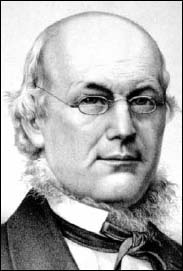
Next page
